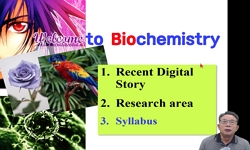The banning of the use of antibiotics as feed additive has accelerated investigations of alternative feed additives in animal production. This experiment investigated the effect of pure citric acid or acidifier blend supplementation as substitute for ...
http://chineseinput.net/에서 pinyin(병음)방식으로 중국어를 변환할 수 있습니다.
변환된 중국어를 복사하여 사용하시면 됩니다.
- 中文 을 입력하시려면 zhongwen을 입력하시고 space를누르시면됩니다.
- 北京 을 입력하시려면 beijing을 입력하시고 space를 누르시면 됩니다.



Comparison of Single and Blend Acidifiers as Alternative to Antibiotics on Growth Performance, Fecal Microflora, and Humoral Immunity in Weaned Piglets
한글로보기https://www.riss.kr/link?id=A101680930
- 저자
- 발행기관
- 학술지명
- 권호사항
-
발행연도
2014
-
작성언어
English
- 주제어
-
등재정보
SCIE,SCOPUS,KCI등재
-
자료형태
학술저널
-
수록면
93-100(8쪽)
- DOI식별코드
- 제공처
-
0
상세조회 -
0
다운로드
부가정보
다국어 초록 (Multilingual Abstract)
The banning of the use of antibiotics as feed additive has accelerated investigations of alternative feed additives in animal production. This experiment investigated the effect of pure citric acid or acidifier blend supplementation as substitute for antibiotic growth promoters on growth performance, fecal microbial count, and humoral immunity in weaned piglets challenged with Salmonella enterica serover Typhimurium and Escherichia coli KCTC 2571. A total of 60 newly weaned piglets (crossbred, 28-d-old; average 8 kg initial weight) were randomly assigned to four dietary treatments in a completely randomized design. Dietary treatments included NC (negative control; basal diet), PC (positive control; basal diet+0.002% apramycin), T1 (basal diet+0.5% pure citric acid), and T2 (basal diet+0.4% acidifier blend). All piglets were orally challenged with 5 mL of culture fluid containing $2.3{\times}10^8$ cfu/mL of E. coli KCTC 2571 and $5.9{\times}10^8$ cfu/mL of S. typhimurium at the beginning of the experiment. The PC group showed the highest ADG and ADFI, whereas gain:feed was improved in the PC and T1 group (p<0.05). All dietary treatments showed significant reduction in fecal counts of Salmonella and E. coli, compared to NC (p<0.05), with PC being better than T1 and T2. Significant elevation in fecal Lactobacillus spp. counts was shown by treatments with T1, T2, and PC, whereas Bacillus spp. counts were increased by treatment with T1 and T2 compared to NC and PC diet (p<0.05). Serum IgG concentration was increased by T1 diet (p<0.05), whereas IgM and IgA were not significantly affected by any of the dietary treatments (p>0.05). From these above results, it can be concluded that, as alternatives to antibiotics dietary acidification with pure citric acid or acidifiers blend did not fully ameliorate the negative effects of microbial challenges in respect of growth performance and microbial environment, however improved immunity suggested further research with different dose levels.
동일학술지(권/호) 다른 논문
-
Modulation of the Somatotropic Axis in Periparturient Dairy Cows
- Asian Australasian Association of Animal Production Societies
- Kim, Jin Wook
- 2014
- SCIE,SCOPUS,KCI등재
-
Effects of Housing Systems on Behaviour, Performance and Welfare of Fast-growing Broilers
- Asian Australasian Association of Animal Production Societies
- Zhao, Zi-Guang
- 2014
- SCIE,SCOPUS,KCI등재
-
Effect of Dietary Supplementation of Procyanidin on Growth Performance and Immune Response in Pigs
- Asian Australasian Association of Animal Production Societies
- Park, J.C.
- 2014
- SCIE,SCOPUS,KCI등재
-
Deletion of the Lmna Gene Induces Growth Delay and Serum Biochemical Changes in C57BL/6 Mice
- Asian Australasian Association of Animal Production Societies
- Ruan, J.
- 2014
- SCIE,SCOPUS,KCI등재




 ScienceON
ScienceON






